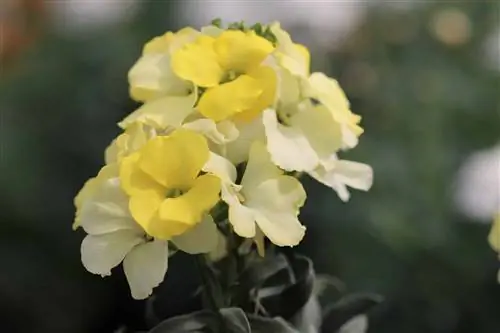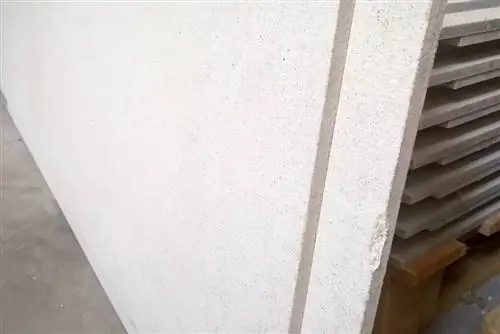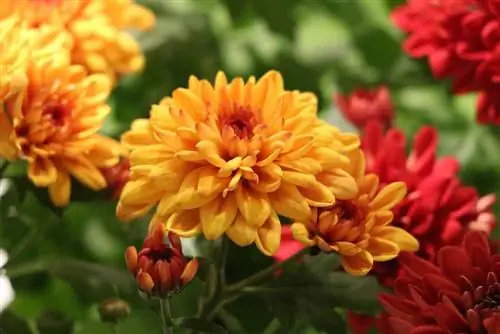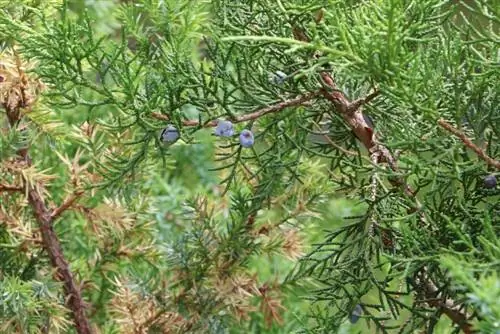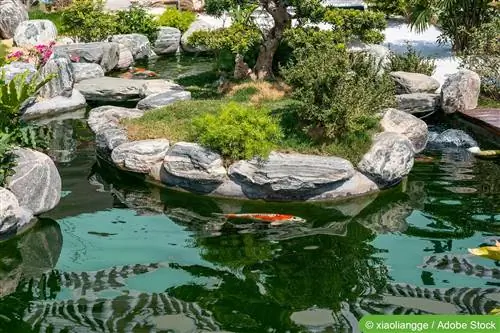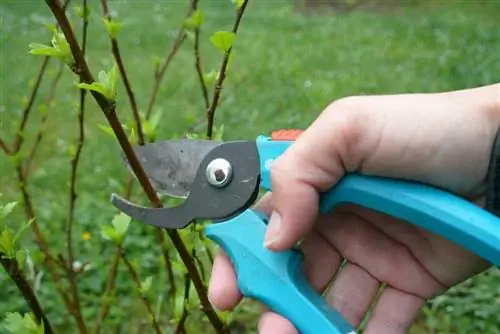- Author admin [email protected].
- Public 2023-12-17 03:39.
- Last modified 2025-01-24 12:45.
The gold lacquer is a long-flowering and fragrant flowering perennial that enriches the flower bed in early spring as the successor to the early-flowering onion plants. This plant is easy to care for and is also suitable for a bouquet of flowers from your own garden.
Special features of gold lacquer
The gold lacquer (Erysimum cheiri) is a member of the cruciferous family. It gets its name “Gold” because of its play of colors, which, originally exclusively yellow, now ranges from brown to orange to red. The second part “-lack” is derived from another related plant, the Levkoje.
- Gold lacquer is one of the biennial plants that blooms very persistently in the months of April to May/June.
- It originally comes from southeastern Europe, where it likes to grow on rocky surfaces and walls.
- What is striking about the 20 to 60 cm tall plant is its intense scent.
- The ten to thirty flowers per inflorescence attract insects such as bumblebees and bees thanks to their honey-sweet scent.
- There are now certain hybrids (cultivars) of the gold lacquer that bloom until November if they are regularly cleared of dead flowers.
- The late varieties such as 'Apricot Twist', 'Constant Cheer' and 'Codswold Gem' shine in orange or orange-purple and white.
Location and planting of gold lacquer
Gold lacquer loves a sunny location where the soil quality should be loose and airy. The permeability of the soil and sufficient sun have a decisive influence on the scent and the duration of flowering. If the soil is too acidic, it is recommended to apply a lime-based fertilizer before planting. Under optimal conditions, on poor, dry soil, the gold lacquer grows densely and magnificently into a long-flowering perennial whose flowers are also suitable as cut flowers.
Tip:
Basically, the plant should not be placed in drafty, damp corners of the garden; it also has a hard time withstanding dry, cold winds.
Once the right spot in the garden has been found, the young plants can be planted in autumn on frost-free days: the depth should be around 5 to 10 cm, the distance should be around 30 cm. If you grow the plants yourself, sow them outdoors in spring in furrows to a depth of 1 cm. Once the seeds have sprouted and the first leaves are visible, they are separated to 30 cm so that the plant can develop well. When they reach a height of 15 cm, the young plants should be trimmed so that they can develop into flower-rich plants.
Tip:
Gold lacquer is an early bloomer and is therefore a good neighbor of tulips, daffodils and forget-me-nots.
The choice of location also determines how old a gold lacquer plant grows. Originally a two-year-old plant, some specimens can live for many years as subshrubs if they have the right place. Locations close to a wall or wall are ideal for this, where a lot of sunlight warms the rock and the plant has good growing conditions. These perennial specimens are often cut back in autumn so that they can grow bushy and full again the following year.
Tip:
Apart from the garden bed, the gold lacquer also thrives in buckets or boxes in which standard soil has been added.
Care and fertilization of Erysimum cheiri
The gold varnish requires little care. In order to extend the flowering period, it is advisable to clean out the inflorescences regularly, even with the old varieties. Fertilization in the garden can be done once a month with simple liquid fertilizer; potted plants require weekly fertilizer. Important: Since the gold lacquer is not winter-hardy, it must be covered in the cold season!
Cut gold lacquer
- Gold lacquer tolerates pruning, but does not need it. Depending on the planting, decisions must be made individually.
- If the plant is planted in a row, it can be cut in autumn, which will allow the gold lacquer to grow like a hedge the following year.
- If there are a few loosely grouped plants, then cleaning out the inflorescences before winter covering is sufficient.
- A final option is to remove the entire plant after flowering and compost it.
Propagation and cultivation
If self-sowing is desired, the gold lacquer is not composted after flowering, but remains with the pods formed. Alternatively, the pods can be harvested and used for sowing in the spring as described above. This should be done in a well-prepared seedbed. In harsher climates, the young plants are separated into pots after sprouting, overwinter in the cold frame and are not planted outdoors until the following spring.
Another way to propagate is through cuttings. All that is needed is leftover pruning or half-ripe, non-flowering shoots that are simply stuck into the ground and rooted there. The advantage of this method is that the color of the flowers is known and particularly beautiful specimens are preserved.
Diseases and pests
Locations where damping off caused by soil fungi has already occurred should not be chosen, because the fungus responsible damages the plant underground and causes it to fall over and die. No other susceptibility to disease is known.
What you should know about gold lacquer in brief
Gold lacquer blooms colorfully and for a long time and is not only a feast for the eyes in early spring, but with a suitable location and the appropriate variety it is a plant that delights well into autumn. It has the great advantage of being very easy to care for and does not require any special cutting or fertilization requirements. It is therefore ideal for hobby gardeners who want to enjoy a blooming garden all year round with as little effort as possible. Gold lacquer can be found in almost every cottage garden.
- The gold lacquer belongs to the genus Schöterich and the cruciferous family.
- It is a perennial, herbaceous subshrub whose flowers have a strong scent of violets. That's why the plant is also called yellow violet.
- The whole plant, but especially the seeds, is toxic and skin-irritating due to cardiac glycosides. The main active ingredient is cheirotoxin.
- Gold lacquer originally comes from the eastern Mediterranean. Of the 10 species of the genus Goldlack, only one is native to Europe.
- The flowers appear early in the year, between March and May on racemose inflorescences.
- In the first year a basal rosette of leaves forms, in the second year the stems become woody and the shoots with the beautiful flowers form.

